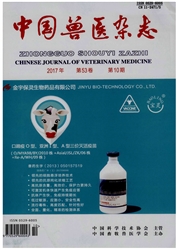

 中文摘要:
中文摘要:
试验选用14头健康小型猪,随机分成两组,分别进行腹腔镜膀胱造口术(LC组)和开腹膀胱造口术(OC组).两组手术全程用重症监护仪和呼吸监护仪进行监护,在试验前、麻醉后、术中10、30、60 min及术后即刻记录RR、HR、BP、SpO2、PetCO2和T,以分析对比两种手术方法对机体生理功能的影响.两组手术均成功完成,LC组术中HR、BP、SpO2高于OC组,但差异不显著.LC组术中RR和PetCO2显著高于OC组(P<0.01),术后即刻在数值上LC组高于OC组,但差异不显著(P>0.05).结果表明,与开腹手术相比,腹腔镜手术在术中对机体主要的临床体征未产生较大不良影响,从而证明腹腔镜下小型猪膀胱造口术是安全可行的.
 英文摘要:
英文摘要:
Fourteen healthy mini-pigs were randomly divided into two groups, laparoscopic cystostomy group (LC)and opencystostomy group (OC). During the operation the RR, HR, BP, SpO2, PetCO2 and BT were recorded. Analysis and comparison ofthe impact of two surgical procedures on the body's physiological functions were conducted. Two operations were completed success-fully, The results shows the LC group's HR, BP, SpO2 were higher than those of the OC group, LC group's RR and PetCO2 was sig-nificantly higher than those of the OC group (P〈0.01), LC group's value of immediate postoperative was higher than that of the OCgroup, but the difference was not significant (P〉0,05).Compared with the Open Cystostomy, the Laparoscopic didn't produce agreater negative impact on the body's major clinical signs, thus proving laparoscopic cystostomy is safe and feasible.
 同期刊论文项目
同期刊论文项目
 同项目期刊论文
同项目期刊论文
 期刊信息
期刊信息
